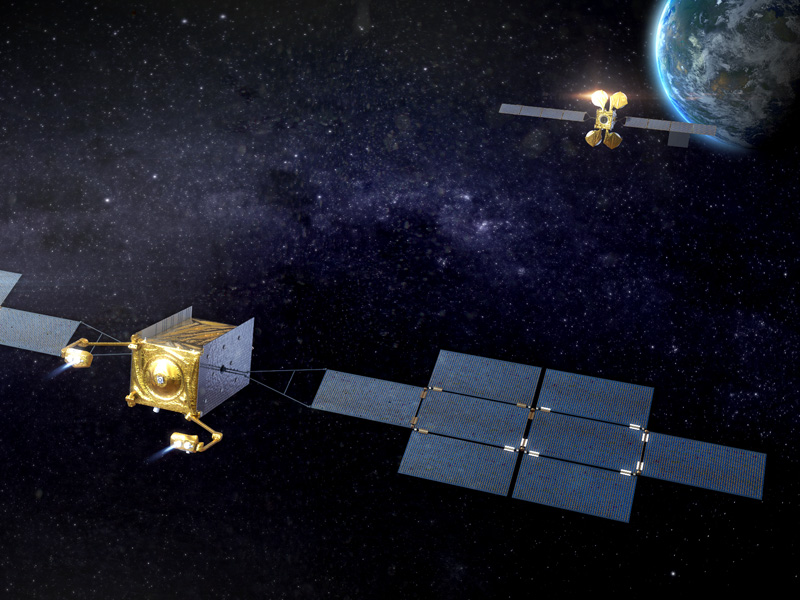20 September 2018 11:30Guidance Solutions for Electric Propulsion-based Rendez-vous Missions

Event Details
Francesco Capolupo Over the last couple
Learn more
Event Details
Francesco Capolupo
Over the last couple of years the use of electric propulsion on satellite platforms allowed for significant cost savings in the telecommunication satellites business. Eutelsat 172B, built by Airbus Defence and Space and launched in 2017, was the World first high power all electric satellite, and paved the way to the use of electric thrusters on many different mission scenarios.
At the same time, there has also been a growing interest in rendezvous missions. If space debris capture & de-orbiting has been the leitmotiv of the recent past, today spacecraft commercial servicing is becoming a concrete reality that encompasses inspection, tugging and refueling missions, as well as commercial cargo missions towards the planned Lunar Orbital Platform – Gateway.
In this context, Airbus Defence and Space and the Centre National d’Etudes Spatiales (CNES) are conducting a joint R&T study to assess the feasibility of semi and non-cooperative rendezvous and proximity operations using electric propulsion, taking up the challenges that the use of electric propulsion has on the design of Guidance, Navigation & Control systems.
The objective of this presentation is to provide details about two different EP-based guidance algorithms that have been developed to solve two different rendezvous guidance problems. The first one is the “Line-Of-Sight (LOS) Guidance” problem, which consists in determining the optimal relative trajectory that maximizes the observability of the relative state when only LOS measurements are available. This is a common problem that arises at far range (i.e. at few tens of kilometers or more) in non-cooperative rendezvous missions, when passive cameras are the only sensors available to perform relative navigation. The second problem is the “Inspection” problem, whose objective is to determine a trajectory that allows to completely observe a non-cooperative tumbling target, while taking into account the illumination conditions, the propellant cost, and, most importantly, the safety of both target and chaser vehicles.
Francesco Capolupo is Guidance, Navigation & Control Specialist at Airbus Defence and Space in Toulouse. He graduated from Politecnico di Milano and ISAE Supaero in 2012 with a Master’s thesis at the Massachusetts Institute of Technology, and he joined the GNC/AOCS & Flight Dynamics Advanced Studies Department of Airbus in 2013. He is currently responsible of the rendezvous mission analysis and GNC algorithms design for the SpaceTug vehicle, a GEO-servicing platform currently under development at Airbus. He is also coordinating R&T activities across France, Germany, and the UK related to technologies to be used for future rendezvous and servicing missions. Recently, he has been appointed as rendezvous GNC architect for the internal Airbus activities related to commercial rendezvous missions towards the Lunar Orbital Platform – Gateway.
Time
20 September 2018
11:30
Location
Politecnico di Milano - Sala Consiglio, DAER, 2nd Floor, Building B12
Via La Masa, 34 - 20156 Milano
Organizer
Politecnico di Milano